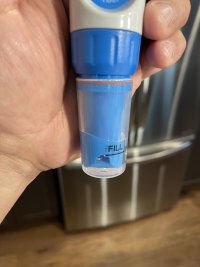John Ha
Active Member
Greetings! I'm new here and am hoping to get a little help from those with more experience than I have.
I've been making fruit wines (typically a 5 gallon batch with 10 lb of fruit - a mix of banana, apple, peach, pear and plum, with a jalapeño pepper) for a few years. Nothing complicated - just brewing in a plastic bucket with an air lock.
The taste is really great but it's always been very hard on the stomach - very acidic. I finally measured the ph of a batch the other day and it's about 2. What I've read suggests that the ph should be in the 3's.
I've read about the carbonates and bicarbonates, but don't have any experience with using them and don't know whether the taste of the wine would be adversely affected if I used enough additive to increase the ph all the way from 2 to 3-ish.
Is there a "best" way to increase the ph a point or so for the whole 5 gallon batch without having too much impact on the flavor?
Thanks!
I've been making fruit wines (typically a 5 gallon batch with 10 lb of fruit - a mix of banana, apple, peach, pear and plum, with a jalapeño pepper) for a few years. Nothing complicated - just brewing in a plastic bucket with an air lock.
The taste is really great but it's always been very hard on the stomach - very acidic. I finally measured the ph of a batch the other day and it's about 2. What I've read suggests that the ph should be in the 3's.
I've read about the carbonates and bicarbonates, but don't have any experience with using them and don't know whether the taste of the wine would be adversely affected if I used enough additive to increase the ph all the way from 2 to 3-ish.
Is there a "best" way to increase the ph a point or so for the whole 5 gallon batch without having too much impact on the flavor?
Thanks!
Last edited:












































![Craft A Brew - Safale BE-256 Yeast - Fermentis - Belgian Ale Dry Yeast - For Belgian & Strong Ales - Ingredients for Home Brewing - Beer Making Supplies - [3 Pack]](https://m.media-amazon.com/images/I/51bcKEwQmWL._SL500_.jpg)














